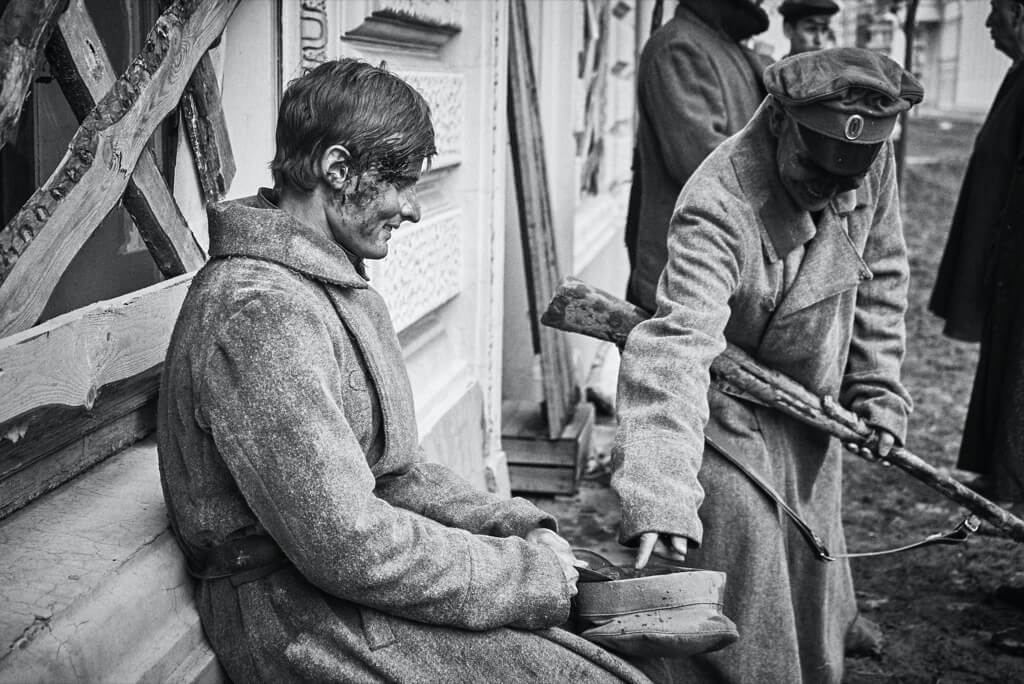- A Global Filming Guide: Do’s, Don’ts, and Must-Knows - February 14, 2024
- Low-Income Americans’ Surprising Spending Habit - December 4, 2023
- France’s Startling Act of Aggression - December 1, 2023
When we reflect on Germany and genocide, our minds often gravitate towards the horrors of the Holocaust, a chilling chapter in human history that unfolded during World War II. However, few are aware that long before the Nazis rose to power, another gruesome genocide took place under the imperial German banner.
To comprehend the roots of Germany’s imperial ambitions and the subsequent genocide, we must delve into its late entry into the world of imperialism. Unlike other European powers that had long-established colonial empires, Germany did not become a unified nation until 1871. Consequently, its imperial expansion was a relatively recent endeavor.
In 1884, the major imperial powers convened in Berlin to discuss the division of the African continent. This pivotal event marked the starting point of Germany’s imperial pursuits. To the surprise of many, Germany emerged from the conference with four new African colonies:
Cameroon: Encompassing parts of modern-day Cameroon, Gabon, Congo, the Central African Republic, Chad, and Nigeria.
German East Africa (Tanganyika): Encompassing parts of modern-day Tanzania, Burundi, and Rwanda.
Togoland: Covering parts of Togo and Ghana.
German Southwest Africa (Namibia): Comprising present-day Namibia.
During its imperial zenith, Germany also held possessions in the Pacific region, including New Guinea, Samoa, the Northern Solomon Islands, and a commercial concession in Tsingtao, China.
The Birth of “Lebensraum” and Its Relevance
Germany’s late entry into imperialism coincided with the emergence of two crucial concepts that would play pivotal roles in shaping the nation’s expansionist policies.
Firstly, the concept of “Lebensraum” (literally “living space”) gained prominence, initially proposed by geographer Friedrich Ratzel in 1897. Ratzel argued that societies needed physical space to thrive, and without it, they risked stagnation and decline. This notion appeared tailor-made for Germany, which was grappling with overcrowded cities and a significant emigration wave to the United States. In the 1870s alone, nearly 1.25 million Germans had embarked on the journey to America in search of better prospects.
With the acquisition of new colonies, Germany’s leadership saw an opportunity to provide “Lebensraum” for its burgeoning population, envisioning the nation’s transformation into a global empire. Among these colonial territories, German Southwest Africa held a special allure. Its arid landscapes were devoid of tropical diseases, and vast expanses of prime cattle-grazing pasture promised the ideal setting for expansion.
Indigenous Peoples and the Uncomfortable Reality
However, there was a significant hitch: these lands were already inhabited by indigenous peoples, primarily the Herero and Nama, who relied on pastoralism for their way of life. Since the colony’s establishment in 1884, locals and colonists had coexisted in a relatively peaceful environment. This harmonious coexistence was maintained through a combination of treaties and negotiations, resulting in a unique arrangement where German immigrants effectively leased land and cattle from the Herero and Nama. This represented a reversal of the typical colonial relationship.
This delicate balance began to unravel as scientific racism took center stage.
An Ideology of Dehumanization
The settler population grew increasingly frustrated with the arrangement, primarily driven by the insidious ideology of scientific racism. This anthropological movement employed pseudoscientific means to promote the idea that non-white races were inherently inferior, even classified as a separate species. According to this twisted worldview, these “inferior” races could be killed and exploited with impunity.
Settlers in German Southwest Africa were incensed at the prospect of renting land from people they considered racially inferior. This resentment fueled their determination to seize land by any means necessary. Sadly, this was only the beginning of a tragic sequence of events that would soon engulf the region.
Amid mounting tensions, Governor Theodor Leutwein emerged as an unexpected ally for the Herero and Nama. Leutwein, a proponent of diplomacy and mutual respect, sought to maintain peace between settlers and indigenous populations. His administration relied on negotiation and collaboration rather than brute force. This approach had kept the region relatively stable, despite growing animosities.
One illustrative incident showcases Leutwein’s commitment to justice. In January 1903, a German trader named Dietrich attempted to rape the wife of a Herero chief and ended up shooting her to death. Dietrich’s trial for murder in Windhoek, the capital of Namibia, was a contentious affair. Initially, he denied the rape attempt and claimed he had fired blindly in fear. He was acquitted due to temporary insanity attributed to “tropical fever.” However, Governor Leutwein was not content with this verdict. He ordered a retrial, resulting in Dietrich’s conviction for manslaughter and imprisonment.
Despite Governor Leutwein’s efforts, events were unfolding that would soon prove beyond his control.
Herero and Nama Uprisings
In 1903, news of a railway construction project that threatened to further dispossess the Herero and Nama communities ignited a rebellion. Chief Hendrik Witbooi led Nama clans in an uprising, and Chief Samuel Maharero led Herero clans in response to mounting discontent. The indigenous populations faced dispossession, abuse, and exploitation, culminating in a desperate revolt against their oppressors.
The Arrival of General von Trotha
The nationalist pressure from groups like the Pan-German League prompted Kaiser Wilhelm II to intervene decisively. In response, the Kaiser dispatched General Lothar von Trotha along with 14,000 troops to quell the uprisings. However, von Trotha’s orders were not limited to mere suppression; they mandated the complete removal of the Herero and Nama from the colonies, making the land available for German settlers.
As the stage was set for a tragic confrontation, the situation in German Southwest Africa was reaching a boiling point.
The Battle of Waterberg
By June 1904, the Herero had mostly retreated to the Kalahari desert, hoping against hope for negotiations that never materialized. General von Trotha and his well-equipped troops encircled them at the Battle of Waterberg in August 1904. However, this was no ordinary colonial engagement. Von Trotha deliberately left a gap in his encirclement, forcing the Herero survivors to flee eastward into the Kalahari desert. Once they were beyond the last waterhole, he constructed a 200-mile-long chain of guard posts to trap them.
It was at this juncture that General von Trotha issued the infamous “Extermination Order” to the Herero people on October 2, 1904. This order, one of the earliest instances of a public pronouncement of premeditated genocide, would become etched in infamy.
Remembering the Forgotten Genocide
The German colonial genocide in Namibia serves as a chilling precursor to the horrors of the 20th century. By examining this dark chapter in detail, we gain a deeper understanding of the complex historical forces that shaped the modern world. It is crucial to remember these forgotten atrocities, not only to honor the victims but also to ensure that history’s lessons guide us away from such horrors in the future.
In the face of this grim history, it is our responsibility to shed light on these events and acknowledge their significance in the broader context of genocide and colonialism. Only through remembrance and understanding can we strive for a more just and compassionate world.

